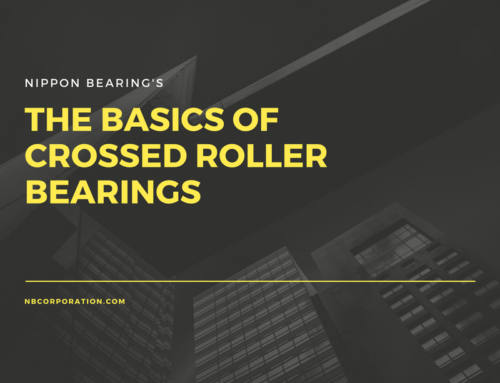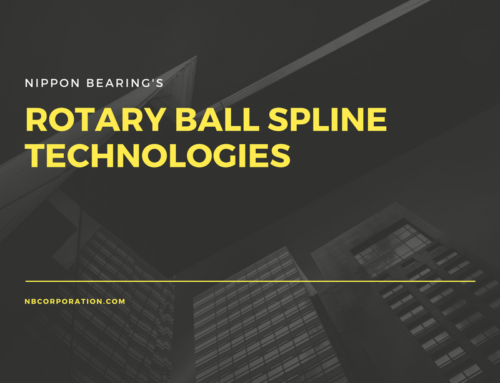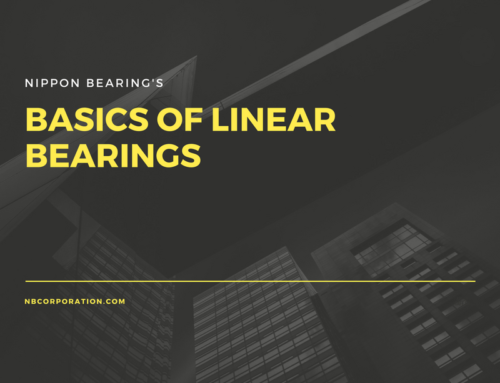Semiconductor labs, in recent years, are billion dollar operations. Accuracy in the automated testing of the semiconductor wafers they produce is a critical part of their fabrication process and a major cost factor. On fabrication of lower cost products, test cost can account for over 25% of the cost of fabrication.
As an engineering director for the design and development of automation systems, Mark Filho saw the need for guaranteeing the accurate positioning of wafer testing probes. To this end, he established Newmark Systems, Incorporated.
Their first customer, fifteen years ago, needed a compact positioner for semiconductor wafer probing. Wafer probing occurs before wires are attached in the burn-in process in preparation for the final chip encapsulation. The probe is checking circuits or capacitance of the dies, i.e. chips, in the wafer. It’s testing to see if the die is functional and meets the specification requirements. Then the wafer is scribed and sliced into discrete semiconductors
Wave Of The Future
The miniaturization of microprocessors was clearly the wave of the future. This dictated miniaturization of the fabrication and testing systems, as well, sparking innovation.
Mark Filho describes the strategy for the development of Newmark’s first product, “What we did was increase the load capacity of a precision positioner. The linear stage we created is a very compact stage for the load carrying capability it has. We’ve, now, been manufacturing it for 15 years. The NLS4 has been very successful.”
The NLS4 runs from 2 inches up to 24 inches using a 9 mm rail system. It will carry twenty-five pounds. Its design was optimized for maximum stability and performance with the use of FEA analysis and incorporates NB Corporation’s miniature linear guides – two guides and four blocks. They also make an NLS 8. The NLS4 vs. NLS 8 refers to the inch width of the slide. The NLS 8 is much bigger with a 200 lb. capacity. Obviously, it’s used for very different applications.
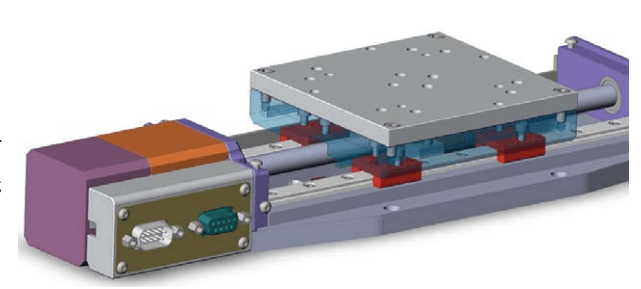
Preload Improves Accuracy
Newmark was able to choose from the widest selection of miniature linear slide guides on the market. The standard SEBS guides’ major advantage is that they have a standard radial clearance that is twice as accurate as other standard miniature guides. Most manufacturers don’t claim that their preload eliminates all clearance. Their standards are plus to minus, which allows gaps, i.e. clearance, to exist. Minus means there is some preload so there’s no gap. NB’s are from zero to minus as a standard, making for greater accuracy because there is no clearance. In other words a negative clearance means the ball is larger than the space adding more pressure and greater rigidity. This increased rigidity is desirable in high precision applications. NB’s standard fabrication requires more control in the assembly and manufacturing process in order to adhere to this higher quality standard.
Guaranteeing A One Rail Solution Is Viable
Of course there can be instances where no preload is desired, where one might want to remove all friction and trade off accuracy and rigidity for minimal friction. In such a case, one might want clearance. But the precision positioner was not such a case.
Had a different design route been taken, there might have been a deformation of the guide block to consider. For instance, had the positioner been mounted on only one rail on an arm that extended to the side, this would have caused deformation of the block, reducing accuracy. There is a solution to this problem. It is called the SEB-AD. The AD version is stiffer because NB optimizes the machining of the top-mounting surface of the guide block that attaches to the table. This withstands the extra moment load that could have caused some clearance due to deformation.
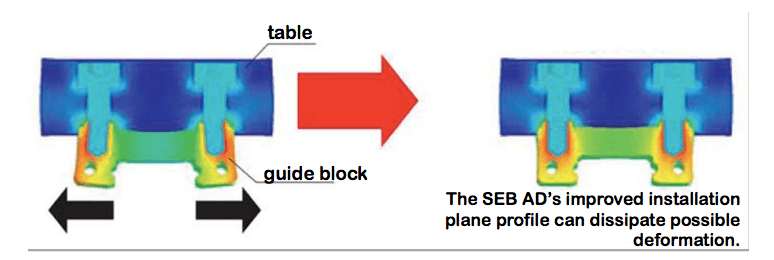
NB Miniature Linear Guide SEB type Anti-Deforming (AD) Profile
Wide Range Of Sizes For Tiny Guides
Wide Range Of Sizes For Tiny Guides For the smallest applications, there is an extra compact block for lesser loads – SEBS-BS (size 2), which is shorter than the standard length block and only has two holes instead of four. Either retained-ball (whose elements allow for easier handling since the guide block may be removed from rail without ball loss) or low-cost non-retained-ball lines are available.
A unique miniature guide that provides the greatest rigidity is the SER. It uses crossed-roller bearings, which give more rigidity. Crossed-rollers have greater contact areas than ball bearings. SER comes in all stainless steel. It has non-retained rollers and is available in the same block sizes and configurations as the SEBS ball bearing miniature guides.
All NLS4 series stages are machined from 6061 aluminum alloy to provide a light yet stiff and stable linear stage. The drive system utilizes a stainless steel ACME leadscrew with internally lubricated plastic drive nut. The drive nut offers zero backlash operation that automatically adjusts for wear to insure zero backlash for the life of the stage. For more reliability and durability, the ways and leadscrews are protected with a strong, machined cover and the encoder is mounted internally directly to the leadscrew rather than being exposed to shock and contamination when mounted in the rear of the motor.
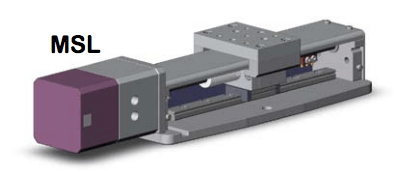
Even Smaller
There are some applications that need a greatly reduced footprint – robotic applications ranging from pick and place in factory and lab automation to medical devices. So Newmark created a linear stage with a single bearing – a single guide instead of 2 guides – with a single block. The carriage is supported over the entire range of travel using a single preloaded NB Corporation miniature linear guide bearing. This positioner, the MSL is tiny yet it can lift 15 pounds. Its maximum velocity is three to four inches per second. It offers travels from 25mm to 200mm, has two leadscrew pitches: 2mm and 10mm and comes standard with a NVS Multi Axes Positioner high torque size 17 stepper motor. End of travel limit switches come standard on the MSL linear stage. The drive system utilizes a stainless steel ACME leadscrew with internally lubricated plastic drive nut. The drive nut offers zero backlash operation that automatically adjusts for wear to insure zero back-lash for the life of the stage.
Like their other positioners, it is all enclosed so the guideways and screws are not visible. For ease of use there are two connectors at the end.
It Goes And Goes
In recent tests executed by Newmark Systems, Inc. of Rancho Santa Margarita, California, due to their friction-free travel, NB’s miniature guides have proven to not wear even after one and a half years of constant travelIn recent tests executed by Newmark Systems, Inc. of Rancho Santa Margarita, California, due to their friction-free travel, NB’s miniature guides have proven to not wear even after one and a half years of constant travel.
Multi Axes
For vertical movement, again, the positioners use the mini guide as in a linear stage except they have a wedge. When the wedge is pushed, it creates lift. The guide moves horizontally to push the wedge and that is what causes the vertical movement. When the wedge is pushed against a second wedge, it will lift, but you have to guide that up and down. The NB bearings are used vertically, horizontally and on an angle.
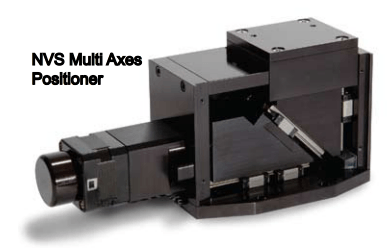
Positioned For The Next Innovation
Newmark just moved their 16 employees to a bigger, newer place with more power. Since they do everything in-house including all machining in order to control quality, their power needs keep growing. There is irony in their getting bigger as their products get smaller. And, Mark Filho is confident that innovations in miniaturization of automation will lead to even more growth going forward

